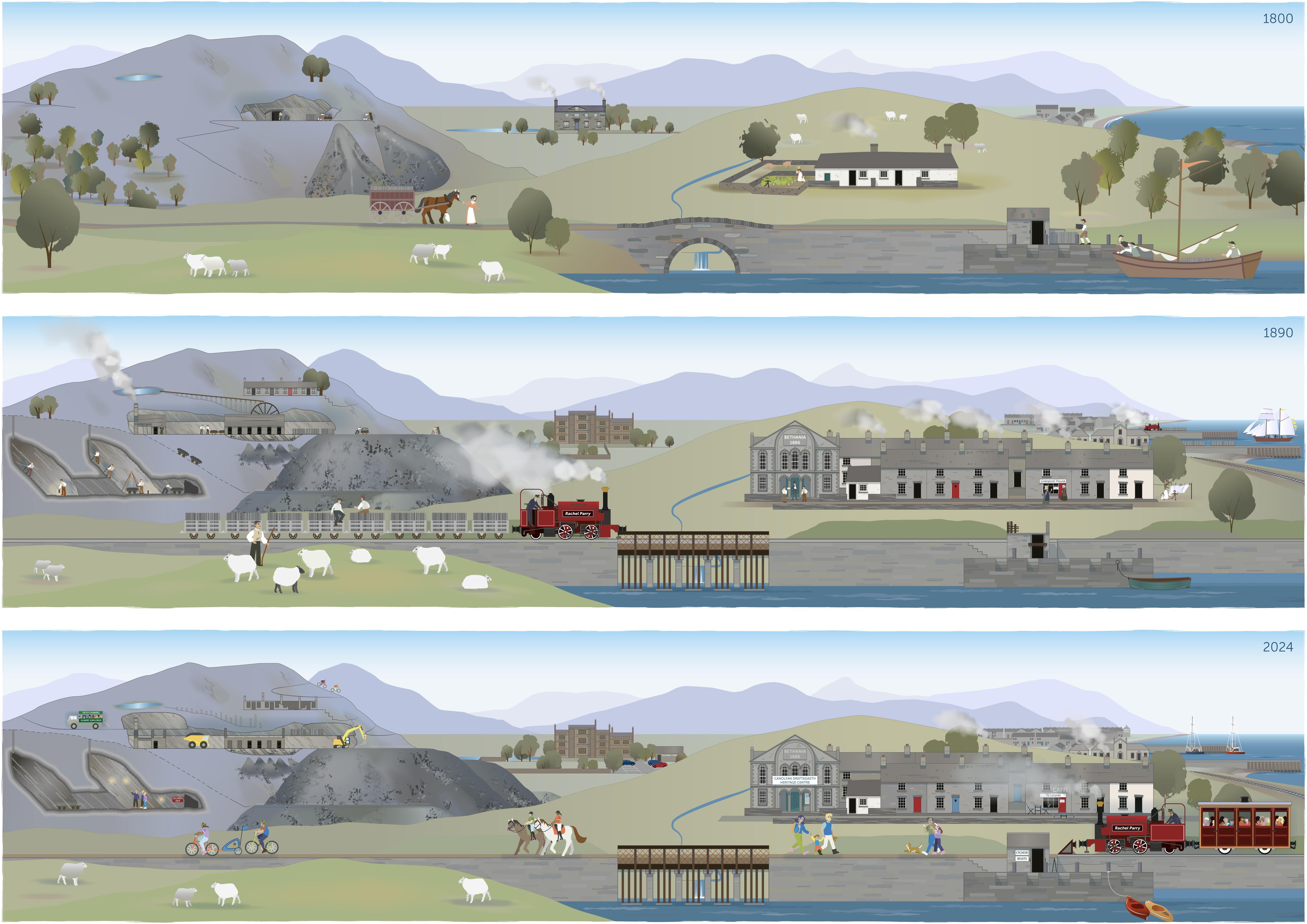The Slate Landscape of Northwest Wales
Inscribed 2021
The Slate Landscape of North West Wales is located in Gwynedd and contains six key areas. The landscape tells the incredible story of the evolution of an upland agricultural society to one dominated by the slate industry; with towns, quarries and transport links carving their way through the Eryri (Snowdonia) mountains down towards the iconic ports.
The slate landscape of North West Wales allows a better insight and understanding of every stage of the quarrying industry than any other place in the world. The enormous quarries, deep pits, huge cavernous chambers and tips; processing mills, transport systems including steep inclines, roads, railways and ports, communities created for the workforce and the grand houses of the quarry owners; and the use of the final product around us everywhere.
Slate quarrying in north Wales has a very lengthy history. The Romans used local slate in their fortress at Segontium, Caernarfon. Slate is still quarried commercially here, and it is acknowledged as being the best in the world.
From about 1790, as the Industrial Revolution got underway in Britain, slate was used for roofing homes and factories, mansions and millhouses. It was easy enough to carry the slates by ship from Gwynedd’s estuaries and ports, then feed them on to the canals that supplied materials to industrial areas.
After 1801, slates began to be carried from the quarries to the coast, along what would become a network of narrow-gauge railways. These wove their routes through challenging landscapes and would go on to make innovative use of steam locomotives. These were an inspiration to engineers across the world. In 1951, volunteers came to rescue and operate the Talyllyn railway - the first time ever that this had happened.
There was also a market for Welsh slate outside Britain. Architects, industrialists, and builders came to see, and learn more about our slate. They have been used across the world for buildings of all kinds. Examples include ordinary terraced houses in the industrial cities of Germany, or the Quakers' Meeting House in Adelaide, and large, dignified buildings such as Copenhagen City Hall, and the Royal Exhibition building in Melbourne.
Slate quarrying brought its own revolution to these quiet, mountainous areas. The quarries, and their surrounding rubble heaps, formed a new visual landscape. There was no machinery in those early days – everything had to be shifted by hand, often in difficult circumstances. Today’s surviving industrial landscape is evidence of this arduous work.
The men and women that lived in this area created a vibrant culture. The cultural landscape here is as important today as it has ever been. The chapels and churches, band rooms, schools and libraries are evidence of respect for faith, education, literature, and music. Fundamental to all is the Welsh language. This is the living language of our communities to the present day.
There is more information about the inscription of The Slate Landscape of Northwest Wales on the UNESCO website, including the statement of Outstanding Universal Value.
Visit the Wales Slate Website www.llechi.cymru
